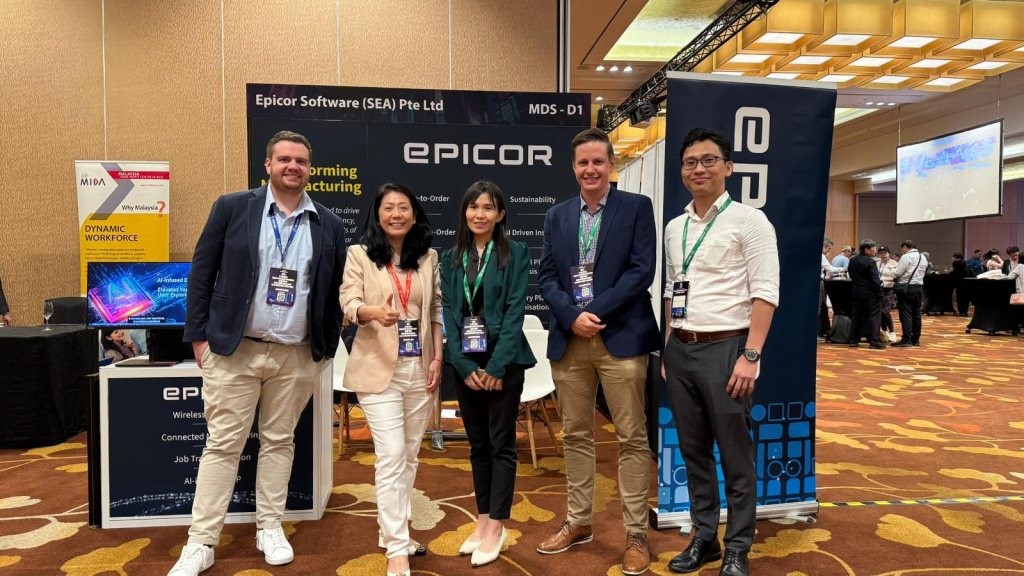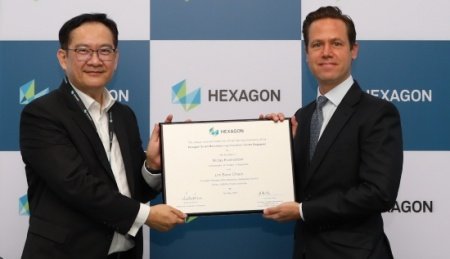Driving Digital Transformation In Metalworking: Insights From Epicor’s Lorraine Wee
In the dynamic world of manufacturing, few industries are as multidimensional and fast-moving as the metalworking sector. Competing on a global scale, companies are constantly reimagining their operations and processes to accommodate next-generation semiconductors, aerospace-grade components, and ultra-precise machined parts. Against this transformative backdrop, APMEN (Asia Pacific Metalworking Equipment News) caught up with Lorraine Wee, Country Manager (Singapore and Philippines) for Epicor Software (SEA) Pte Ltd, on the sidelines of a recent Singapore Manufacturing Federation (SMF) Manufacturing Day Summit 2025 to discuss how advanced software solutions are helping metalworking businesses navigate new opportunities and challenges.
The Confluence of Metalworking And Digitalization
Metalworking companies have long provided critical support to major sectors—from semiconductor and aerospace to heavy industrial and construction. “Metalworking companies are actually one of our best-fit industries,” says Wee. “A lot of our customers come from this sector.”
A key success factor, especially in Singapore, is the ability to link operations across complex production lines and serve high-tech verticals such as semiconductor manufacturing. Where once metal fabrication was primarily about machining and finishing, modern-day metalworking must cater to intricate, nanometer-scale tolerances and advanced materials.
Wee observes:
“Metalworking shops that serve the semiconductor industry need to manage extremely fine tolerances. They want the shop-floor data to flow seamlessly back into their ERP system, ensuring real-time visibility into materials usage, process parameters, and cost structures. That’s where the power of a fully integrated software platform becomes indispensable.”
Industry 4.0 And ERP Interconnectivity
Traditionally, ERP (enterprise resource planning) systems were siloed, limiting manufacturers’ ability to glean timely insights from the production floor. Today, manufacturers demand integrated connectivity from sensors, automation systems, and supply chains through to the top-level financial dashboards. As Wee puts it:
“Integration or interconnectivity used to be a major barrier to adoption of technology. But now, with Industry 4.0, open protocols, REST APIs, and platforms like our Automation Studio, manufacturers can ‘snap in’ new software tools quite easily. They no longer have to worry about the complexities of older ERP structures that were never built for real-time data collection.”
This flexibility allows high-mix, low-volume shops (common in Singapore’s precision engineering ecosystem) to rapidly scale or pivot—crucial if they are handling contract manufacturing projects across aerospace, oil and gas, or consumer electronics.
Shifting From Siloed Data To Actionable Insights
IoT devices, collaborative robots, and advanced process controls can generate an avalanche of machine data. The real challenge is separating the “signal” from the “noise” and using that data to guide decision-making.
Wee explains how Epicor’s ERP solution helps:
“The data collection on the shop floor—whether it is cycle time, machine usage, quality checks, or scheduling—feeds directly back into the ERP. Previously, teams were reluctant to adopt new technology because they feared the complexity of integration. But with modern solutions, you gain a single source of truth. And that single source of truth is what powers actionable insights.”
For metalworking companies, those insights might include better real-time scheduling (e.g., re-routing a job to another CNC machine if a lathe is nearing capacity), more accurate job costing (capturing every step in the production process), and improved traceability of materials.
Addressing Common Pain Points
Many small and medium enterprises (SMEs) struggle to fund large capital investments in digital infrastructure while also grappling with workforce upskilling. “Manufacturers face multiple pressures right now,” says Wee. “At the SMF Summit, I sensed a genuine urgency around adopting the right technologies and also training their employees to handle these systems.”
In parallel, environmental and sustainability demands are intensifying. Government initiatives, such as Singapore’s commitment to net-zero by or around mid-century, challenge companies to track carbon footprints, waste management, and energy usage more closely. This data, too, is best tracked through comprehensive, integrated software.
“Sustainability, AI, interoperability—everything is converging at the same time,” Wee notes. “And the manufacturers we speak to are seeing that an advanced ERP system helps them thread all these issues together. When you have end-to-end visibility, you can build accurate audits, reduce waste, and optimize production flows.”
Global Ambitions And Local Footprints
For local Singaporean or ASEAN metalworking outfits eyeing new markets, advanced ERP solutions can accelerate expansion. When a domestic shop secures a contract from overseas, it faces the immediate need to scale planning, warehousing, and compliance reporting.
“Internationalization is also a conversation,” Wee says. “As companies branch out from Singapore, they’re often dealing with multi-site operations, multiple currencies, and complex shipping channels. An ERP system that handles compliance in various jurisdictions while offering a unified operational view can literally open doors for them.”
SMF’s Role And Forward Momentum
The Singapore Manufacturing Federation’s Manufacturing Day Summit 2025 served as a focal point for these discussions. SMEs, MNCs, and government bodies alike shared best practices and tackled urgent questions about productivity, AI, and workforce development.
Wee commends the SMF’s efforts:
“I think they have a lot of influence on manufacturers, especially in conveying the right message about where Singapore’s industrial base needs to be headed. This year’s theme is absolutely on-point because 2025 is indeed a turning point. With multiple disruptions coming together—technology, skilled labor, and sustainability—it’s critical for the entire ecosystem to be aligned.”
Looking Ahead: Transform Or Be Left Behind
Even as economic headwinds rise and global supply chains remain volatile, the consensus is that digitalization will define the winners in the manufacturing arena. Many of Epicor’s customers have realized that adopting an ERP system is not a “nice-to-have” but the backbone of future growth and competitiveness.
Wee sums it up well:
“Metalworking companies are right at the crossroads. They need to adopt technologies, upskill their workforce, and incorporate sustainability measures—all at once. That can be daunting. But with the right integrated solutions, it’s entirely achievable. And the companies that get it right now will shape the next decade of manufacturing.”
This vision resonates strongly with the objectives of APMEN, which has consistently championed advanced manufacturing, digital transformation, and best practices in the metalworking ecosystem. As we continue to highlight stories of industrial innovation, it’s clear that software-driven solutions—in everything from AI-based scheduling to shop-floor IoT—are rapidly becoming the linchpin of future-ready metalworking.
Conclusion
The takeaway from our discussion with Lorraine Wee is that digital integration is not a one-time investment—it’s an iterative journey that must be embraced holistically. With open APIs, cloud capabilities, and automation platforms readily available, integration hurdles have been lowered considerably. By leveraging these modern ERP solutions, metalworking shops can gather real-time data, unify disparate operations, and position themselves for global competitiveness.
Yet this shift demands more than just tech spend; it requires upskilled talent, top-down leadership, and ecosystems of support from organizations like the SMF. The manufacturing sector is indeed at a turning point—one where technological enablement, sustainability mandates, and workforce readiness converge. Companies that harness the power of integrated ERP stand poised to evolve beyond mere metal shops to become agile, digitally driven innovators.
APMEN will continue to track these transitions, celebrating the companies that embrace digital transformation and highlighting solutions that pave the way for Industry 4.0. Keep an eye on our upcoming features for more deep dives into real-world applications, lessons learned, and success stories from the metalworking frontlines.
















